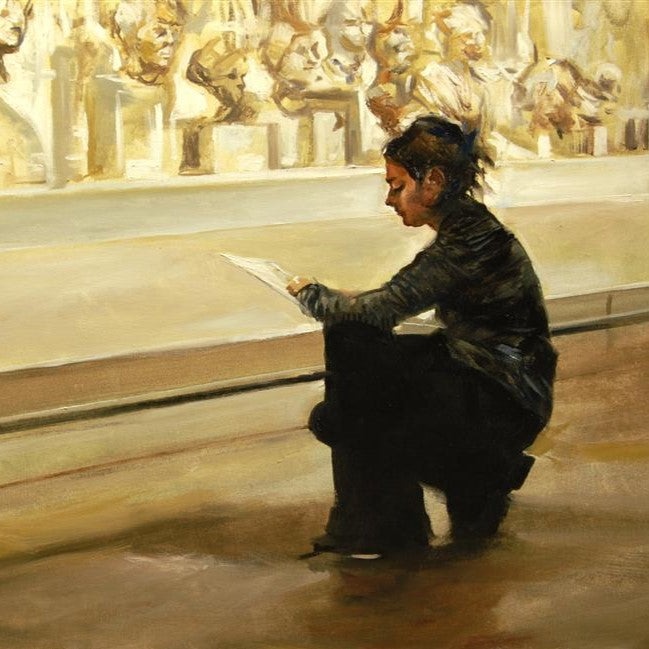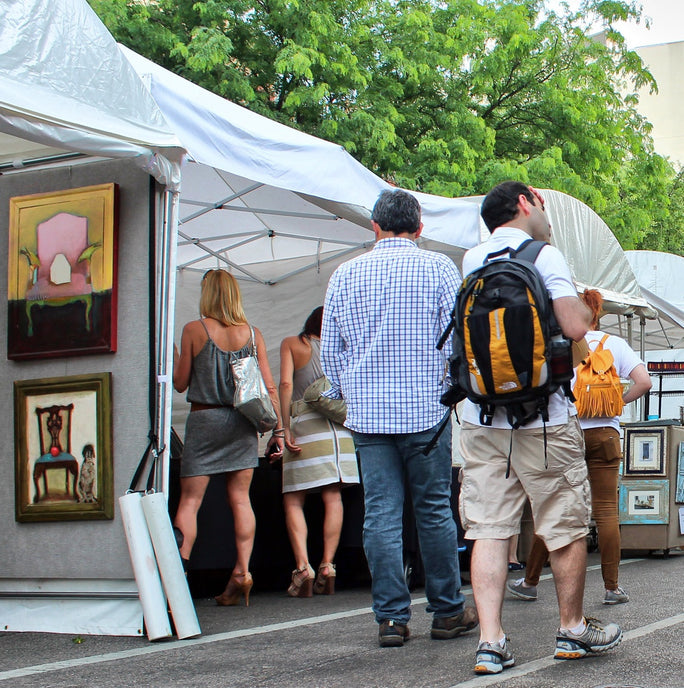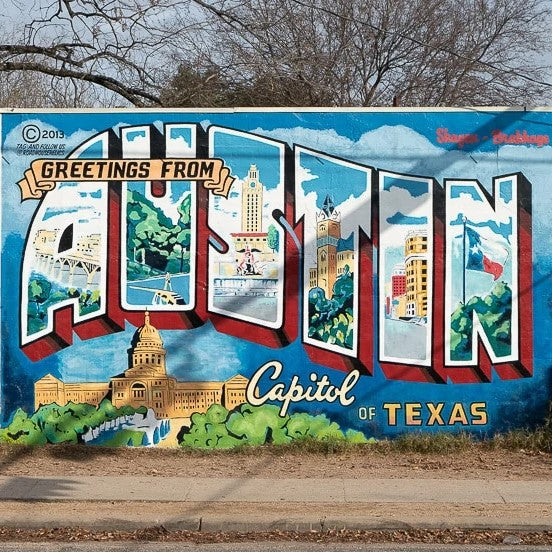Art to Foster Healing for Depression



Most of us in the art business consider the delivery of good energy through art as part of our job description. The excitement and happy enthusiasm we hear in the voices of our clients when they receive a piece of art they had been admiring, or their pleased reaction to perusing new art we showcase online, is very rewarding. As we continue our series on art for healing, this kind of pleasure that heightens our senses is one of the fundamental ways in which art brings healing, and is a significant aspect of utilizing art for addressing symptoms of depression.
Depression is one of the most common mental health disorders which afflicts approximately 19.4 million Americans, or almost 8% of the population. While in many cases conventional therapies and medications have a proven track record for their effectiveness, art therapy as a holistic approach has been found to have substantial benefits for easing the stress, sadness, and general anxiety which may accompany depressive episodes. With this in mind, we’re taking a look at the different ways art and creative expression can be applied for their healing qualities for people who suffer from depression.
The Basics Regarding Depression
Depression in its simplest form is described as a persistent feeling of sadness, though there is certainly more complexity to the diagnosis. According to WebMD, the general characteristics of depression (technically referred to as major depressive disorder) may include loss of interest in activities, difficulty sleeping, feeling agitated, worthless, or guilty. There are different types of depression, with some being situational and others for which a person’s genetic makeup or life circumstances may play a role. A professional diagnosis is invaluable in determining how to best treat depression, but art therapy and the experience of art can be meaningful tools in a supplemental holistic approach.
(Please note that the following is not intended to be a substitute for professional medical advice, diagnosis, or treatment, and does not constitute medical or other professional advice)
Types of Therapy Which Utilize Art for Healing

Hands-on Facilitated Art-making Activities
Evidence suggests hands-on art therapy is an effective tool for managing the symptoms of depression. The ways in which a professional therapist utilizes the creation of art to help foster healing for people experiencing depression can vary depending on their individual circumstances and may include music therapy and other holistic efforts. Psychotherapist and Art Therapist Carolyn Mehlomakulu shares in her “Creativity and Therapy” blog that specific approaches should be based on the needs of the individual, but some general techniques would typically include the following:
- Art to allow the expression of emotion
- Art to envision a brighter future
- Art for coping and positive distraction
- Art to highlight connection and relationships
Although painting is one common form of art therapy that we hear about frequently, other artistic activities may provide meaningful therapeutic healing for participants including pottery making and general crafting. Writer Laura Johnson has shared the story of how her family discovered green birds crafted from felt after her grandmother passed, and later learned that they had been created as a coping mechanism for her grandmother’s depression while she was receiving in-patient treatment. Johnson places a bird as an ornament on her Christmas tree each year in memory of her grandmother and as a reminder to maintain optimism and hope.
Experiencing Art as a Mindful Viewer
One way in which viewing art is valuable is in its ability to stimulate neural pathways and encourage new perspectives, and reconsider how we perceive the world around us.
The results of a study of individual stroke survivors who considered themselves art enthusiasts compared to those who did not identify as art lovers, indicated a better quality of life and general health outcomes for those who expressed an appreciation for the arts. The results also indicated that the self-described art lovers were typically calmer and less depressed.
The Phoenix Art Museum has developed unique programming that uses art as a form of mindfulness and meditation. “Slow Art” is facilitated by teams of museum educators and mindfulness guides through monthly presentations of specific artworks for which the public is invited to participate. It offers the opportunity of an unconstrained experience of art, with ample time to “connect to the moment and relax your mind.” One participant described the workshops as “marvelous and transformative, providing inner peace at will.”
Benefits of Art for Treating Depression

Improved Emotional Wellbeing
In addition to participating in regular talk therapy sessions and taking prescription medication, self-taught artist A’Driane Nieves makes abstract paintings to cope with depression and bipolar disorder. Her discovery of art for healing came about after traveling a rocky road of childhood trauma and later in life, postpartum depression after the birth of her second child.
After her psychiatrist suggested using her hands for creative expression to cope with her mental health struggles, she picked up her paintbrush and began painting abstract artworks. Nieves describes the feeling as a transformative moment, for which she felt a sense of great relief. The discovery was life-changing, not in that it eliminated her depression altogether, but art provided a roadmap for navigating it in a meaningful way.
Reduced Stress and Increased Happiness
There is robust research in recent years about how engaging with art impacts the brain, reducing stress and increasing happiness. Results of a study of cancer patients showed that those who were engaged in art activities had demonstrably lower stress as measured by changes in cerebral blood flow observed on MRI. The goal of the art tasks, which were in addition to breathing techniques, yoga, and other mindful practices, was to encourage self-expression and enhance coping strategies. Effects on blood flow noted in MRI analysis correlated with lower stress and anxiety among those who employed the therapeutic strategies.
This is just a snapshot of the many ways that art can facilitate healing, including for people diagnosed with depression. You can explore UGallery’s collections of original art, many of which are focused on peace and optimism, and check out new art weekly on our website.





